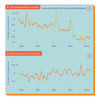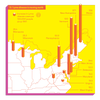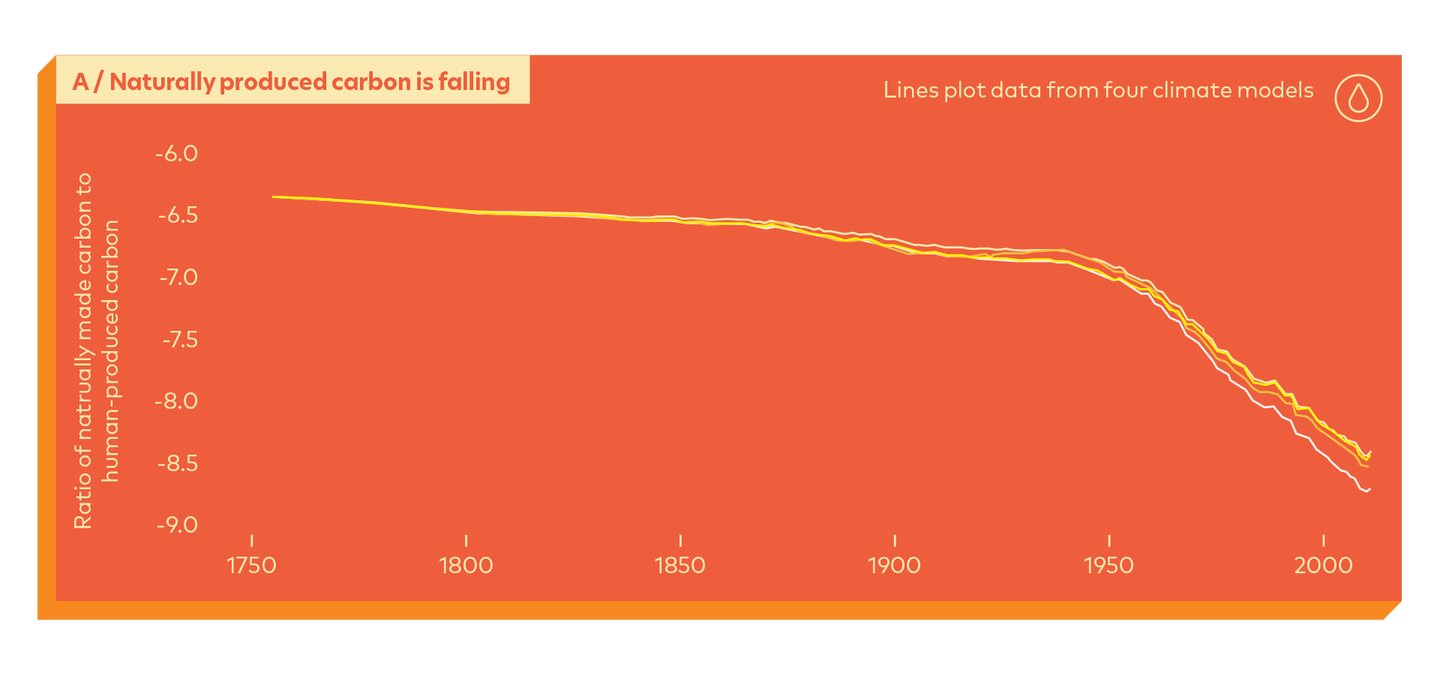Not convinced that humans are causing climate change? Here are the facts.
Let's dive into decades of data.
EARTH IS EVER SHIFTING. Continents drift, ice ages come and go, odd and wonderful creatures take shape only to one day vanish. Reviewing the history of our world, some might be tempted to dismiss the warming we are experiencing as just another of these planetary ebbs and flows. Yet scientific consensus is clear: Not only is the climate rapidly changing, but humans are to blame. Each decade for the last 40 years has replaced the preceding one as the hottest on record, and historical data proves this acceleration isn’t natural. But decadal temperature increases are hard to feel. Here are some signs that Homo sapiens are behind this trend, and a couple of effects you can feel yourself.
Fossil-fueled skies (above)
Since 1800, global CO2 levels have climbed more quickly than in any other period during the past million years. Analyzing isotopes in the atmosphere shows that carbon-12, found largely in vegetation, accounts for most of the increase; concentrations of the element’s two other isotopes fell in comparison. Climate scientists argue the only possible source for the added carbon-12 is fossil fuels, which are derived from ancient plants and release the pollutant when burned.
Shrinking stratosphere

If, as some folks claim, increased solar activity is causing global warming, the entire atmosphere would be growing hotter. Instead, data reveals greenhouse gases are trapping heat in the troposphere (the portion closest to us), making it expand. Meanwhile, the stratosphere above it is cooling and shrinking. It’s lost a quarter mile since the 1980s and may retract another 0.6 miles by 2080, which could create stronger storms and disrupt satellite trajectories and GPS communications.
A spring in spring’s step

Nationwide, spring arrives between six and 19 days earlier than it did 70 years ago. More balmy days sounds great, but the seasonal reset disrupts nature’s clock. Plants bloom before pollinators emerge from hibernation, migratory birds arrive to find previously reliable food sources on different schedules, and crops that blossom early can succumb to late frosts. Continued climate change will make seasons even more unpredictable, so it may be impossible to settle into a new normal.
Bug out

Warming is bringing deer ticks into areas that were until recently too cold for them, introducing Lyme disease to new regions. Infections in the US nearly doubled between 1991 and 2018, with potentially serious implications: If untreated, Lyme can cause joint, heart, and neurological disorders. As temperatures continue climbing and winters grow shorter, the little bloodsuckers will keep on spreading—they’ve already arrived in parts of Canada that were previously free of them.
This story originally ran in the Summer 2021 Heat issue of PopSci. Read more PopSci+ stories.

